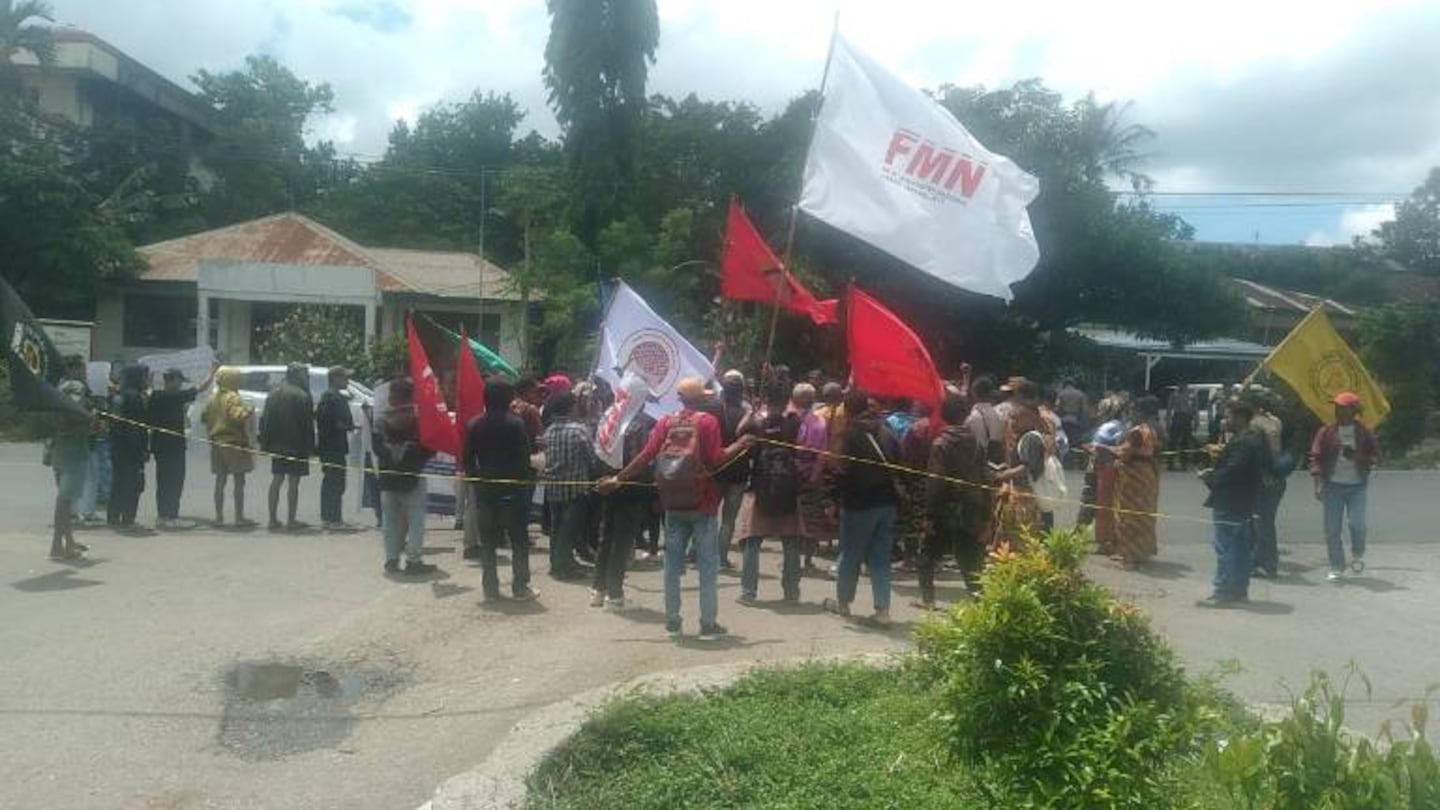The indigenous West Timorese, who live in an Indonesian province, East Nusa Tenggara, share Māori concerns that government announcements will eventuate in the extraction of natural resources without consultation from indigenous custodians. The other half of their island is the independent state of Democratic Republic of Timor-Leste, which was granted its independence in 2002.
Yesterday activist/educator Tin Ngata said if the Treaty Principles Bill went ahead, it would remove the Crown’s commitments to uphold Te Tiriti including consultation.
She said the Treaty principles had been a roadblock to stop transnational companies from extracting natural resources and have been used for protection against environmental destruction.
On International Human Rights Day today, the West Timorese said they had the same concerns.
Nature reserve changed to national park
A Timorese human rights activist who wished to remain anonymous spoke to Te Ao Māori News about their recent struggle to protect Mount Mutis.
The Timorese activist said groups had organised a peaceful demonstration in November after Indonesian Environment and Forestry Minister Siti Nurbaya Bakar declared on September 8 that Mount Mutis would change status from a nature reserve to a national park.
Today they raised the flags of Indonesian West Papua, West Timor and Maluku and called on President Prabowo Subianto to respect their human rights.
They argue that since Indonesia is signed up to the UN on the Rights of Indigenous People, that it should respect the rights of indigenous peoples.
Union of Catholic Asian News reported the 78,789 hectares park is home to unique biodiversity, with 88 different species of birds and eight species of mammal including the Timor deer and cuscus. There are also at least three watersheds and 13 rivers flowing from the mountain.
Timor History and Culture Forum was one of the groups opposing the change in status for their mountain. The forum has 54,000 members, uniting customary figures concerned with customary rights issues of the Timor island.
Concerns on environmental destruction
The change in status means the area is open to wider Indonesian government intervention and development.
Public suspicions come from experience with policies, laws and regulations in the past made unilaterally without public consultation.
Kayetanus Abi, a representative from the forum, told the local independent media outlet Floresa the mountain was key to their survival and they had an obligation to protect its natural resources.
The mountain is rich in marble, manganese, gold, oil and gas.
In the 1980s the mountain was targeted by marble mining companies and, after long peaceful resistance, they abandoned operations in 2010.
The resistance was organised by Aleta Baun, a Mollo woman who won the 2013 Goldman Environmental Prize in California for her efforts protecting her ancestral land.
Residents have said their indigenous wisdom has been ignored and they are concerned that any resource extraction would disrupt the balance of nature which the mountain maintains on the island.
The significance of the mountain
The Timorese consider the mountain their mother, and refer to it as the Garden of Eden or the heart of Timor Island.
The Mollo indigenous people consider it the place of origin for their ancestors and the dwelling place of the spirits of their ancestors known as Uis Neno.
They are deeply connected, seeing the mountain as their own flesh and blood and source of their livelihood.
Abi said there was no law saying the state owned the land and the government had made the change without the consent of any of the Indigenous communities.
Environmental destruction a ‘baseless fear’ Indonesian official says
The NTT Natural Resources Conservation Agency (BKSDA) is a government agency in Indonesia, part of the Ministry of Environment and Forestry (KLHK) and is responsible for managing and conserving natural resources and wildlife in the East Nusa Tenggara province.
BKSDA Agency head Arief Mahmud has said residents’ worries were “baseless fear, fear that has not happened”.
Mahmud said the government didn’t want to destroy the area but the national park would be broken into several zones including a core zone, jungle zone, rehabilitation zone for damaged areas, traditional-use zone, and a religious zone.
He said the religious zone would protect cultural sites and provide a legal umbrella for indigenous people to perform Indigenous rituals that were currently “illegal”.
But the forum’s Abi rejected the notion their rituals were illegal and noted the UN declaration said indigenous peoples had the right to practise their spiritual and religious traditions, customs and ceremonies.
“The law governing the use and management of customary areas in Mutis existed long before the founding of the Republic of Indonesia,” Abi told media outlet Floresa.
Komodo National Park tourist attraction displacing indigenous
Longgina Novadona Bayo, a lecturer at the Department of Politics and Government at Gadjah Mada University in Indonesia has said the anger from indigenous people about this status change was normal.
In September she published an article on the super-premium tourism development of Komodo National Park in West Manggarai Regenc, which she said offended marginalised and displaced the indigenous Ata Modo people.
She said a zoning system still put residents at risk of losing their living space, being displaced and alienated from their ancestral land.
Bayo also said zoning didn’t always protect the ecosystem as tourist activities and commercial use could cause both direct and indirect damage to conservation areas.
Although BKSDA says tourism would provide economic benefits, Bayo said, if reflecting on Komodo National Park, the tourism utilisation zones didn’t directly benefit local communities but instead large companies invested in the tourism sector.




